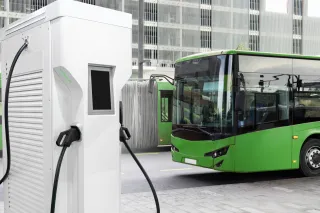A tram or bus may in the future be able to sense the atmosphere inside the vehicle. Coordinated by VTT Technical Research Centre of Finland, the research project explores how artificial intelligence can be used to build situation-aware services for physical spaces. For example, in public transport it would enable measurement of passenger experience for improving both safety and comfort on board while preserving the privacy.
Read the summary
- Ethical considerations have been prioritised during development to ensure passenger anonymity and responsible use of AI.
- The project aims to create more responsive and comfortable public transport systems.
This summary is written by AI and checked by a human.
In the HIPE project (Human-technology Interoperability and Artificial Emotional Intelligence), VTT, Teleste and Ambientia have developed a service concept and technology platform that combines cameras, sensors, data analytics, audio and video analysis, and AI. This system continuously measures the emotional atmosphere inside a tram or bus and provides real-time information that can be used to improve passenger comfort and safety.
"The aim is to explore the potential of this technology and identify new types of situation-aware services for public transport. HIPE is an important step toward intelligent, passenger-centric mobility solutions. Since the technologies used are built from existing product-level components, they could be deployed in real operations relatively quickly," says Sari Järvinen, Senior Scientist at VTT.
The system uses sensors to monitor passengers' movement and facial expressions, providing insights into passenger mood. This information can help operators anticipate disturbances, reduce safety risks, and create a more pleasant travel environment. Real-time data can be shared with traffic operators, drivers and security personnel.
"With this technology, we can build smart transport environments where operators, passengers, technology providers, and safety personnel work seamlessly together. In the future, this could lead to more responsive and comfortable public transport systems that serve people better," says Jani Väre, Innovation Director from Teleste.
Ethical and regulatory aspects have been central to the development process. The solutions must comply with current and emerging European legislation, with particular attention paid to data privacy and passenger anonymity.
"When used correctly and with privacy in mind, anticipating risky situations and preventing disruptive behaviour can help create a safer and more enjoyable travel experience," says Design Director Tuuli Aalto from Ambientia.
About HIPE
HIPE is an innovation project funded by Business Finland and developed in collaboration with several Finnish organisations. The project explores sensing technologies and AI analytics for creating emotion-aware services in physical environments. A key focus is on regulatory frameworks and ethical use of AI.
Meet our experts

Sari Järvinen is a Senior Scientist and Project Manager specializing in human-centric AI and intelligent environments. She has worked at VTT since 1999. Her core expertise includes service and information system development, data-driven applications, and behavioral analytics. In the research and development projects she leads, real-time data and intelligent technologies are harnessed to meet user needs.
A key application area in Sari’s work is smart environments – such as trams or meeting rooms – that sense mood, behavior, and spatial context. These environments dynamically adapt to their users, enhancing both the user experience and the interaction between people, physical spaces, and digital services.
Sari has extensive experience in collaborating with both Finnish and international partners in projects under EU and EUREKA/ITEA frameworks. Her goal is always to bridge research and real-world application, generating concrete value for businesses and society.






